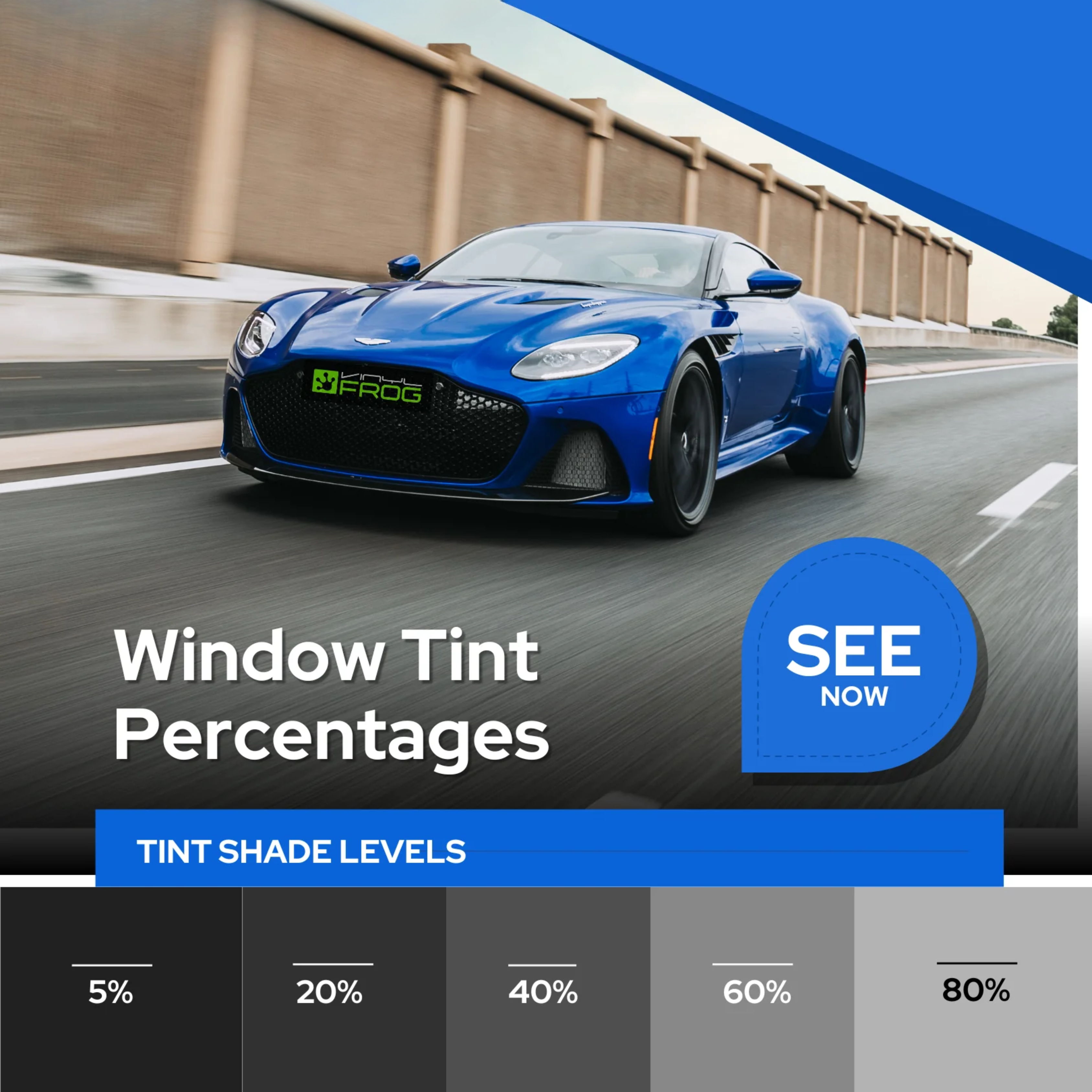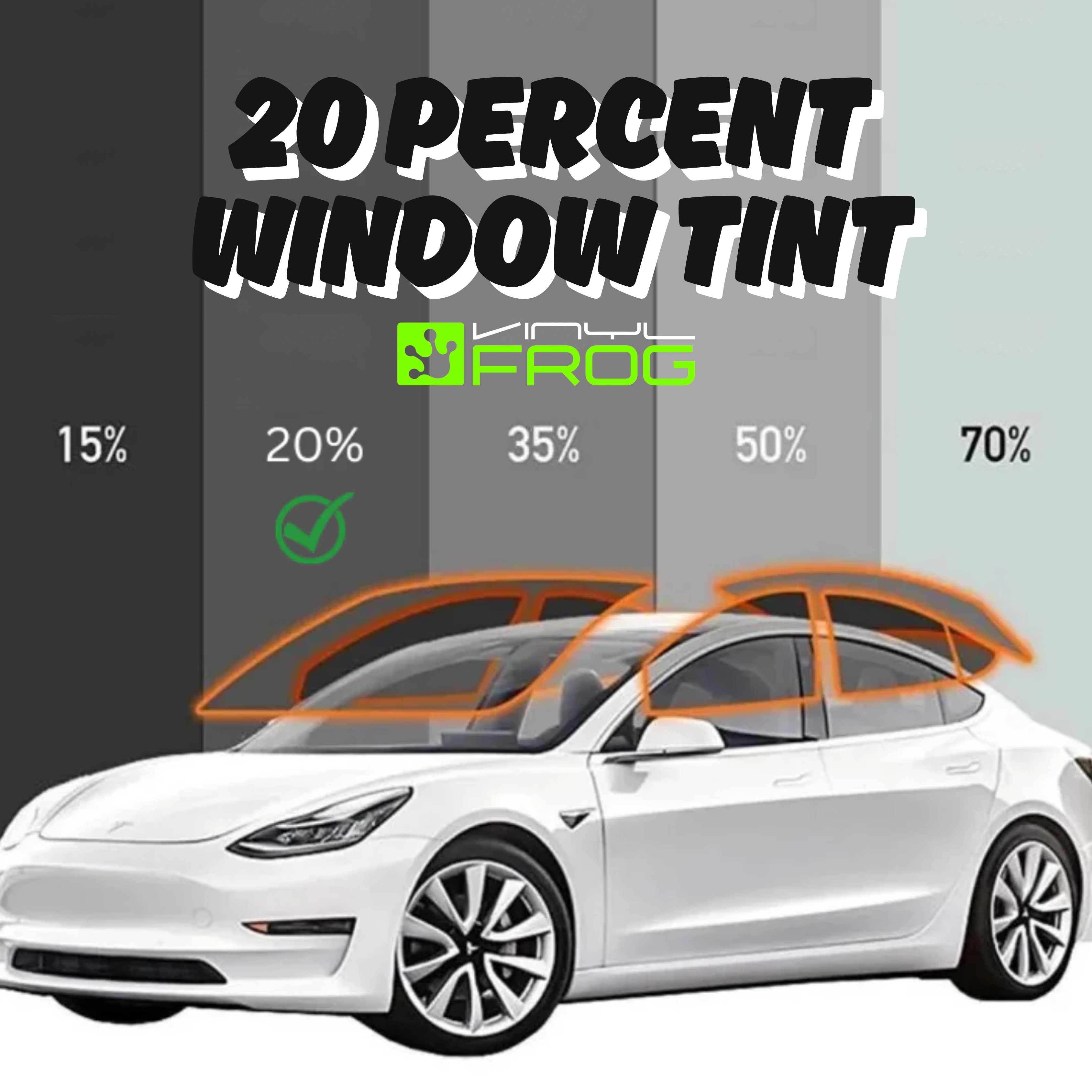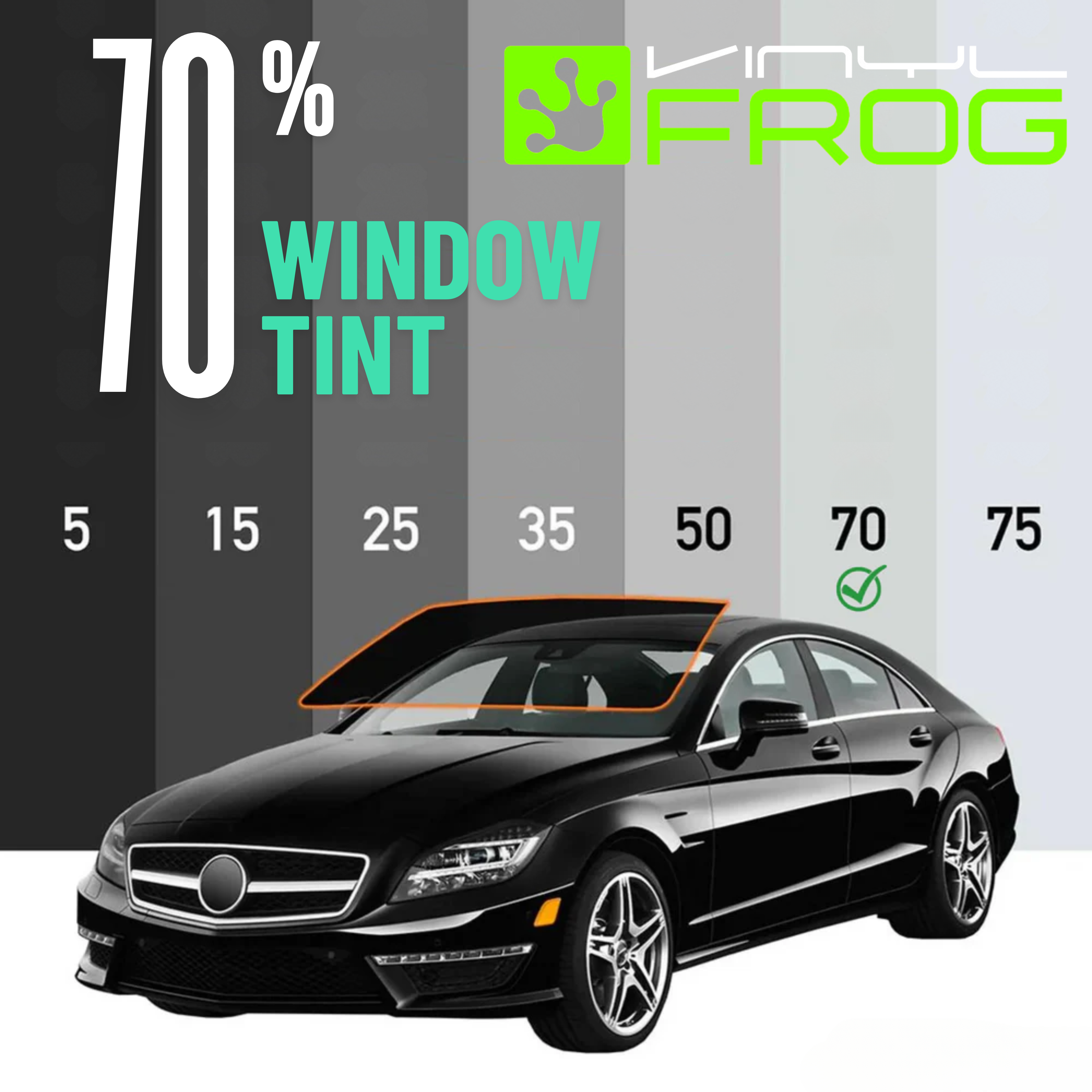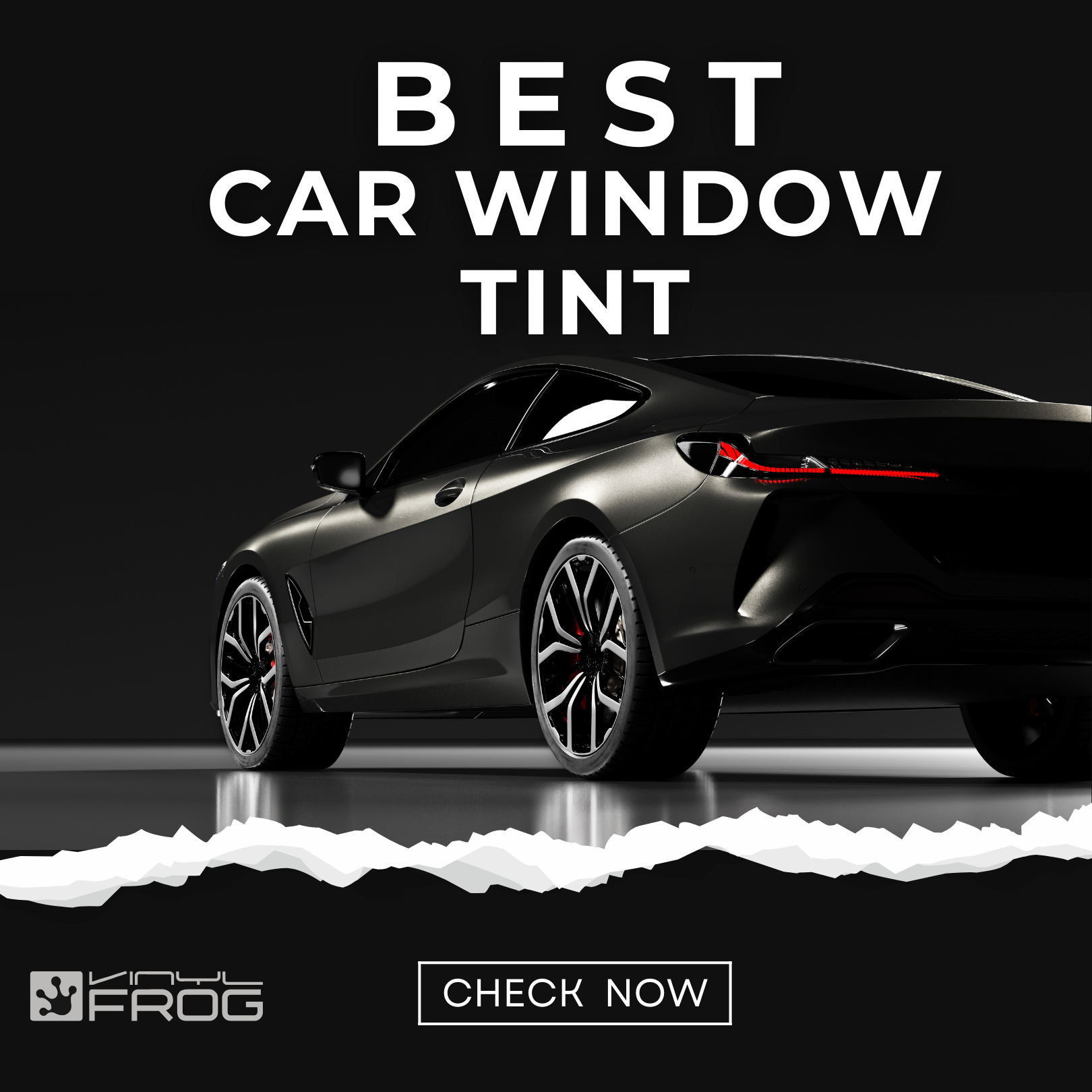Posted By Vinyl Frog On January 30, 2024
Window Tint Laws For Pennsylvania

If you live in Pennsylvania and want to get the windows of your vehicle tinted, you must know the tint laws of the state to avoid hefty fines and ensure safety on the road. Window tinting adds a touch of luxury and sophistication, transforming the aesthetic appeal of your vehicle.
It is quite a tempting addition because of its aesthetic appeal and high functionality. Beyond its cool factor, window tint serves practical purposes such as shielding you from harmful UV rays while protecting the interior of your car from sun-induced discoloration. Additionally, who wouldn't appreciate a bit of privacy away from prying eyes?
However, before you rush to enhance your car's allure with the darkest tint available, it's crucial to understand your local tint laws. In this guide, we'll delve into the intricacies of window tint laws for Pennsylvania to help you steer clear of legal issues and comply with state regulations.
Permitted Window Tint Darkness Levels
The primary basis of window tint laws is Visible Light Transmission (VLT), which refers to the measurement of the amount of light allowed to pass through the window. Expressed as a percentage, VLT represents the fraction of light allowed to penetrate through the tint.

Window Tint Percentages
For example, a window film with a VLT of 80% allows 80% of visible light to pass through, while blocking the remaining 20%. VLT is a crucial factor in window tint regulations, as it determines the darkness or transparency of the tint and ensures that vehicles maintain a safe level of visibility on the road.

In Pennsylvania, specific VLT percentages are mandated for different windows on vehicles, including windshields, front-side windows, and back-side windows. Here’s what you should follow:

20 Percent Window Tint
Legal Window Tint For Passenger Vehicles
When it comes to window tint for passenger vehicles like sedans in Pennsylvania, strict regulations govern the permissible levels of visible light transmission.
For the windshield and all side windows at the front of the vehicle, a minimum of 70% visible light transmission is required. This means that these windows must allow 70% or more of light to pass through. The top three inches of the front windshield can be tinted to any darkness level.
The same standard applies to backside windows and the rear windshield, ensuring a consistent level of transparency throughout the vehicle.
Staying compliant with these guidelines ensures not only a stylish appearance but also adherence to the law, preventing any potential legal issues.

70 percent Window Tint: Legal, Clear, UV-Blocking
Legal Window Tint For Multi-Purpose Vehicles
Multi-purpose vehicles such as trucks and SUVs in Pennsylvania follow similar guidelines for window tint, with some notable distinctions. The windshield and front side windows of these vehicles must also maintain a visible light transmission of 70% or more.
However, when it comes to backside windows and the rear windshield, there are no specific restrictions on visible light transmission percentage. This flexibility allows for more customization options for multi-purpose vehicle owners, offering the freedom to choose tint levels that suit their preferences while still complying with the law.

The vehicles included in this category are characterized by their construction on a truck chassis and their suitability for occasional off-road use. Examples of such vehicles may include SUVs such as Hyundai Kona, Kia Niro, Kia Soul, crossover vehicles, and buses.
Additional Regulations In Pennsylvania Tint Laws
- According to regulations, tinted windows in vehicles must display a label permanently affixed between the tint material and the window surface.
This label serves as verification of compliance with standards, containing crucial information such as the name of the material manufacturer or a unique registration number. Importantly, the label must include a statement indicating adherence to VESC-20 standards. - Moreover, manufacturers of window tint film are not mandated to certify the film they sell within the state. While VLT compliance remains essential, this variance in certification requirements simplifies the process for both manufacturers and consumers, offering a streamlined approach to window tinting in Pennsylvania.
- The Pennsylvania tint laws do not apply to hearses, ambulances, government vehicles, or any other vehicle for which a currently valid certificate of exemption has been issued under regulations adopted by the department. This also includes exemptions on medical grounds.
- Any vehicle that has the back side or rear windshield tint is required to have fully functional dual side-view mirrors so that the driver can easily see the road behind the car.
- There are no specific tint colors that are prohibited however tints that have a mirrored or metallic look are not allowed as they might cause distractions and excessive glare that can be temporarily blinding.
Window Tint Reflection Requirements In Pennsylvania Law
Window tint serves various purposes, including the reflection of light to reduce heat and glare inside vehicles. In Pennsylvania, specific regulations govern the allowable level of reflection for different vehicle types.

Doctor Note For Window Tint
For sedans, both front and rear side windows must refrain from having any mirrored or metallic tint. Similarly, for SUVs and vans, regulations prohibit mirror or metallic tint on both front and rear side windows. Staying informed about these reflection requirements ensures compliance with Pennsylvania's window tint laws and a comfortable driving experience.

Enforcement And Penalties In Pennsylvania Window Tint Law
In Pennsylvania, window tint tickets can cost as much as $110 for a single misdemeanor. This may not be a serious legal offense. Judges and other court authorities, however, may be able to levy heavier fines for particular tint infractions or persistent violations of Pennsylvania tint rules.
Tint infractions must be addressed and corrected right away in order to prevent penalties from getting worse and to guarantee that the state's laws are followed.

Best Car Window Tint - Buying Guide 2025
Exemptions And Medical Waivers
In Pennsylvania, individuals seeking a medical exemption for window tint must undergo a certification process by a licensed physician or optometrist. This certification is crucial for those with specific medical conditions that require tinted windows for health reasons.

This certificate must be carried in the vehicle at all times and shown to the police officer upon request. If such a vehicle is sold, it is the responsibility of the owner to remove the window tint before handing over the vehicle. Here's an overview of the medical exemption process for window tint in Pennsylvania:
1. Certification Requirement
Individuals requesting a medical exemption must have their physical condition certified by a licensed physician. This certification serves as documentation of the medical necessity for window tint.
2. Submission
The certified documentation is submitted to the Pennsylvania Department of Transportation (PennDOT) and it typically includes details about the medical condition and the recommended tint levels necessary for the individual's well-being.

3. Evaluation By PennDOT
PennDOT reviews the medical documentation and evaluates whether the individual qualifies for a medical exemption. This process ensures that the exemption is granted only in cases where tinted windows are deemed medically necessary.
If PennDOT approves the medical exemption, the individual is then permitted to have colorless window tint products that block incoming UV rays.

How Long Do Headlight Tints Last?
It's important for individuals seeking a medical exemption to follow the proper channels and provide comprehensive documentation to support their request. This process helps ensure that exemptions are granted judiciously and only for legitimate medical reasons.
Keep in mind that medical exemptions are typically granted on a case-by-case basis, and compliance with the specified tint levels is still required within the bounds of the approved exemption.
How To Care For Your Window Tint In Pennsylvania?
Since Pennsylvania has a humid, continental climate with wide fluctuations in seasonal temperature, it is important to take care of your tinted windows to ensure their longevity and effectiveness. Here are some tips on how to maintain them:
- After window tint installation, wait a few days before cleaning the windows to allow the film to fully cure.
- Use a gentle cleaning solution such as a mild soap or a designated window tint cleaner. Avoid ammonia-based cleaners, as they can damage the tint over time.
- Use a soft, non-abrasive cloth, such as microfiber, to clean the windows. Avoid using paper towels or rough materials that can scratch the tint.
- Apply light pressure while cleaning to prevent damage to the tint. Wipe in a straight, non-circular motion to minimize the risk of scratching.
- Be cautious when transporting sharp or abrasive objects near the tinted windows. Sharp edges can cause damage to the film.
- Periodically inspect the window tint for any signs of damage, peeling, or bubbles. If you notice any issues, consult a professional for repairs.
- Ensure that the window tint is professionally installed. High-quality installation reduces the risk of imperfections and ensures the longevity of the tint.
Frequently Asked Questions
Final Words
In conclusion, navigating Pennsylvania's window tint laws is crucial for both style and legal compliance. Understanding VLT percentages, specific regulations for passenger and multi-purpose vehicles, and additional requirements ensures a seamless tinting experience.
While exemptions and medical waivers exist, adherence to proper maintenance and professional installation is key. Make informed decisions to enjoy the benefits of window tinting while avoiding potential fines and legal hassles. Drive stylishly and responsibly on Pennsylvania roads.











